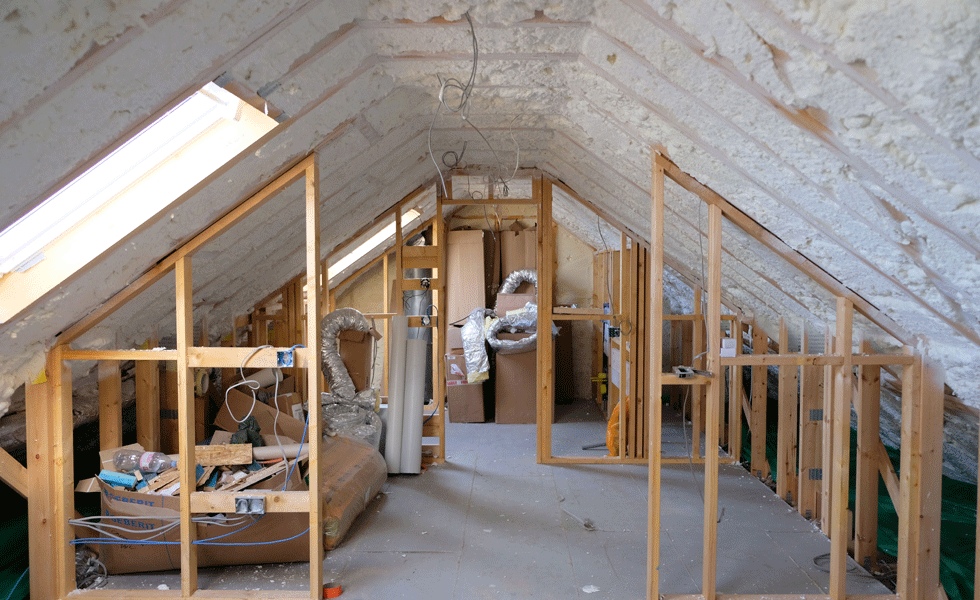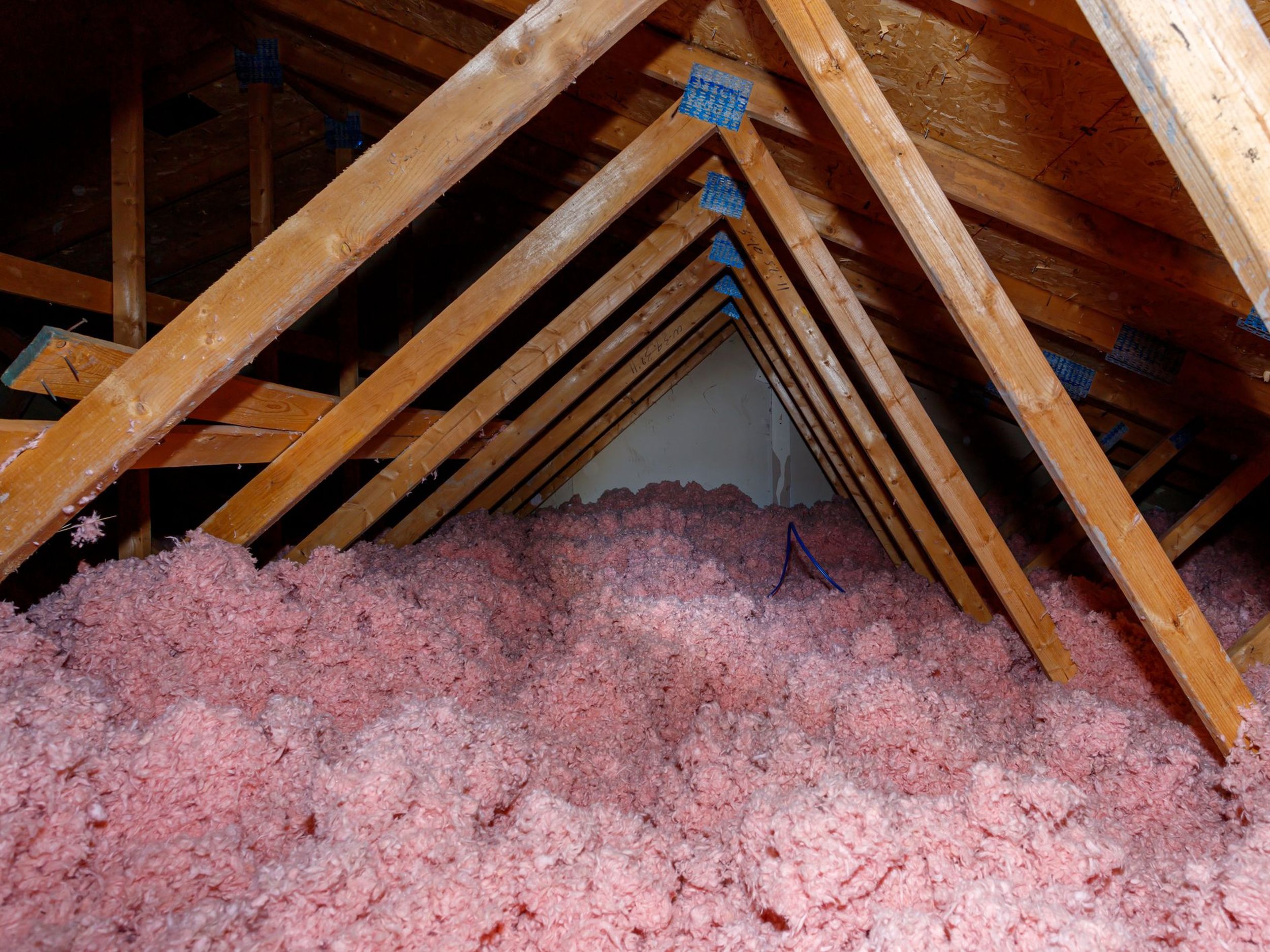Optimize Your Energy Savings with Specialist Attic Insulation DFW Solutions
Optimize Your Energy Savings with Specialist Attic Insulation DFW Solutions
Blog Article
Discover the Different Kinds of Attic Insulation and Their Special Benefits for Your Home's Energy Performance

Fiberglass Insulation
Fiberglass insulation is just one of the most commonly made use of materials for attic room insulation because of its outstanding thermal performance and cost-effectiveness. Composed of little glass fibers, this material properly catches air, developing a shielding barrier that aids maintain constant interior temperature levels. Its high R-value per inch makes it especially efficient at withstanding warmth transfer, which is essential for energy conservation in homes.
Setup of fiberglass insulation is reasonably uncomplicated, commonly available in batts or loose-fill types, fitting numerous attic room setups. In addition, it is non-combustible and resistant to moisture, decreasing the danger of mold and mildew advancement. This longevity adds to its longevity, making fiberglass a practical long-lasting investment for house owners.
Additionally, fiberglass insulation is usually manufactured from recycled materials, which enhances its eco-friendliness. The product can also add to soundproofing, reducing sound transfer between rooms. While it is vital to use protective gear throughout setup to avoid inflammation from the fibers, the overall advantages of fiberglass insulation, consisting of energy financial savings and environmental considerations, make it a preferred selection for improving attic performance and promoting a comfy living atmosphere.
Spray Foam Insulation
Spray foam insulation is an extremely effective option for attic room insulation, understood for its exceptional air sealing and thermal efficiency. This cutting-edge insulation product is composed of a mixture of isocyanate and polyol material, which, when integrated, broadens quickly to fill gaps and dental caries in the attic room area. Its capability to comply with numerous surface areas guarantees a constant barrier against air leakages, dramatically decreasing heat loss throughout cooler months and warmth gain throughout warmer seasons.
Among the key benefits of spray foam insulation is its high R-value per inch, which suggests it supplies exceptional thermal resistance in a relatively thin application. This is specifically helpful in attics where room is usually limited. In addition, spray foam can assist reduce wetness build-up, decreasing the danger of mold and mildew and mold development, which can be damaging to both the structure and indoor air quality.
While the initial cost of spray foam insulation may be greater than typical alternatives, its long-lasting energy cost savings, combined with enhanced comfort and enhanced home worth, make it a worthwhile financial investment for property owners looking for boosted power efficiency. Attic Insulation DFW. Generally, spray foam insulation attracts attention as an effective option for maximizing attic insulation
Cellulose Insulation

Cellulose insulation is a prominent choice for attic room insulation, mainly composed of recycled paper products treated with fire resistants. This ecologically friendly choice is known for its superb thermal performance, properly minimizing heat transfer in both summer season and winter season months. The thick structure of cellulose permits it to fill up gaps and gaps in attic spaces, supplying a seamless obstacle against air leakages.
Among the substantial benefits of cellulose insulation is its capability to stand up to mold and parasites, owing to the fire retardant therapies used throughout manufacturing. Furthermore, it flaunts a high R-value per inch, which translates right into superior power efficiency. House owners can expect reduced cooling and heating expenses as a result of enhanced insulation.
Installation is normally achieved through blowing loose cellulose into the wanted location, enabling for a fast and effective process. This technique likewise decreases disruption to the existing structure. Moreover, cellulose insulation has a reasonably low environmental effect, as its manufacturing process utilizes recycled official website materials, contributing to lasting structure practices.
Rock Wool Insulation
Among the various options for attic insulation, rock wool, also understood as mineral wool, attracts attention due to its excellent thermal and acoustic efficiency. Made from recycled or all-natural materials, rock wool is produced by melting rock and spinning it right into fibers, causing an item that uses exceptional insulation properties.
One of the substantial benefits of rock woollen insulation is its high R-value, which suggests its efficiency in withstanding warmth circulation. This particular not only improves power efficiency but also adds to preserving a comfortable interior temperature level year-round. Furthermore, rock wool is naturally fire-resistant, making it a safer alternative for homes as it can withstand heats without melting or releasing harmful fumes.
Furthermore, rock woollen insulation masters soundproofing capabilities, properly lowering noise transmission between areas and from outside resources. This makes it an excellent option for property owners seeking a peaceful living setting. Rock wool is moisture-resistant, aiding to stop mold development and keeping the structural integrity of the attic room room. In general, rock woollen insulation provides an extensive option for enhancing energy performance, safety, and convenience in residential settings.
Radiant Obstacle Insulation
Radiant barrier insulation functions as a reliable service for minimizing heat transfer in attics, especially in warmer environments. This type of insulation jobs by mirroring induction heat away from living rooms, thereby decreasing the amount of heat that enters a home throughout warm climate - Attic Insulation DFW. Generally made up of a highly reflective material, such as aluminum foil, glowing barriers are set up in attics, dealing with the roofing system, where they can obstruct inbound heat from the sun
The primary advantage of radiant barrier insulation is its ability to lower cooling prices. By reflecting heat as opposed to absorbing it, glowing barriers can aid preserve a much more secure interior temperature level, decreasing the work on cooling systems. This effectiveness equates into reduced power bills and enhanced comfort for property owners.
In addition to energy savings, radiant obstacles can additionally add to improved interior air top Your Domain Name quality. By lowering heat build-up, they aid lessen moisture degrees, which can stop mold development and enhance overall air flow. When installed appropriately, glowing obstacle insulation can be a very useful enhancement to any type of energy-efficient home, making it a worthwhile factor to consider for home owners aiming to improve their attic insulation method.
Conclusion
In conclusion, recognizing the different types of attic room insulation-- fiberglass, spray foam, cellulose, rock woollen, and radiant obstacles-- enables property owners to make informed decisions regarding energy effectiveness. Each insulation kind provides one-of-a-kind benefits, such as superior thermal resistance, dampness management, and audio depletion. By picking the ideal insulation product, like this considerable decreases in energy costs can be accomplished, along with improvements in indoor convenience. Eventually, the ideal selection adds to a more lasting living setting and promotes general energy preservation.

In verdict, comprehending the different kinds of attic room insulation-- fiberglass, spray foam, cellulose, rock wool, and glowing obstacles-- enables homeowners to make educated choices pertaining to power effectiveness.
Report this page